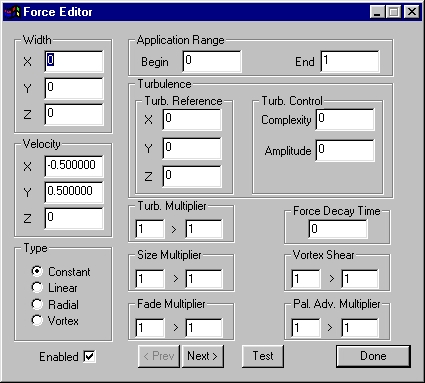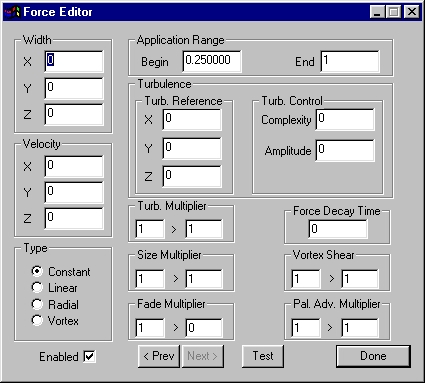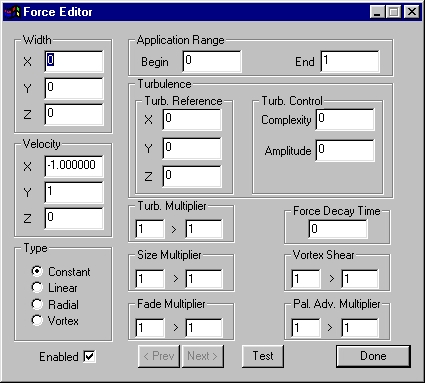| This is a child page. You can use Parent in the quick nav bar at the top or the bottom of the page to navigate directly back to the parent of this page. Some child pages are more than one level deep, and in that case will require more than one Parent click to reach the outermost document level. |
§ 16.94.7 - Rocket Particle System Example
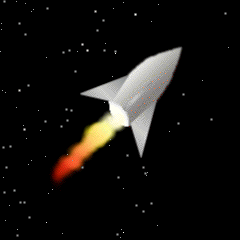
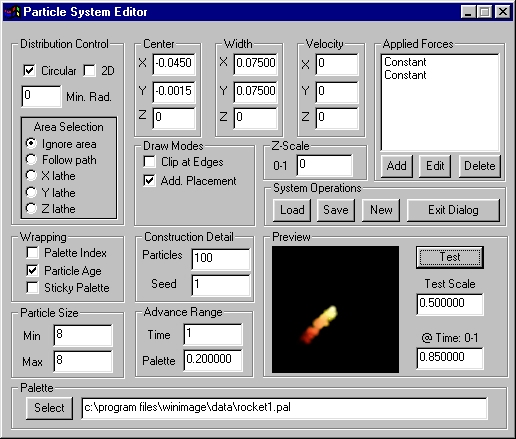
Using 100 relatively large particles (8), we set up a center position to match the cheesy little rocket's tail and an initial distribution over the direction we want the rocket exhaust to go. We use additive placement because this is a light effect. We wrap the particles age so that when they end, they snap back to the beginning location. The time advance is 1, so that the particles are spread out all over the system's lifetime — some are just starting when others are in the middle, and so on for the whole time span.

This is a classic "flame palette". The colors here describe the temperature of a flame. Really hot is white... then yellow... then red.... then black. We don't need black, because we used the second force to fade the flame out, which did the same thing on a black background, even better in the case of something that is utterly consumed in the burning. If there was ash in the exhaust, for instance, you'd need the black color. You also might want to put blue in there between white and yellow; it depends on what is supposed to be burning. Many types of metals tend to burn blue before yellow. Other flame palettes can include green (copper burns green) and bright red (sodium burns red) and so on.
§ 16.94.8 - Star Field Particle Definition
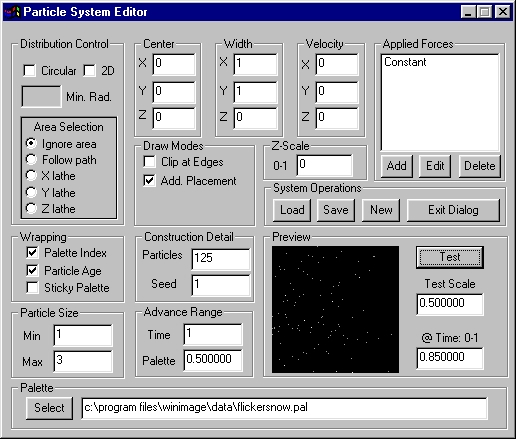
125 little particles for stars, distributed evenly over the entire image in X and Y using the width control. Time advance is one so that they have lifespans all over the system lifetime, and a palette advance of .5 so that they work through the "twinkle" colors at different times. (Yes, we know that stars wouldn't twinkle in space, but the idea was to show you how to do it... :-P)
Keyboard Navigation
, Previous Page . Next Page t TOC i Index o Operators g Glossary
, Previous Page . Next Page t TOC i Index o Operators g Glossary
Copyright © 1992-2007 Black Belt Systems ALL RIGHTS RESERVED Under the Pan-American Conventions
WinImages F/x Manual Version 7, Revision 6, Level A
box
